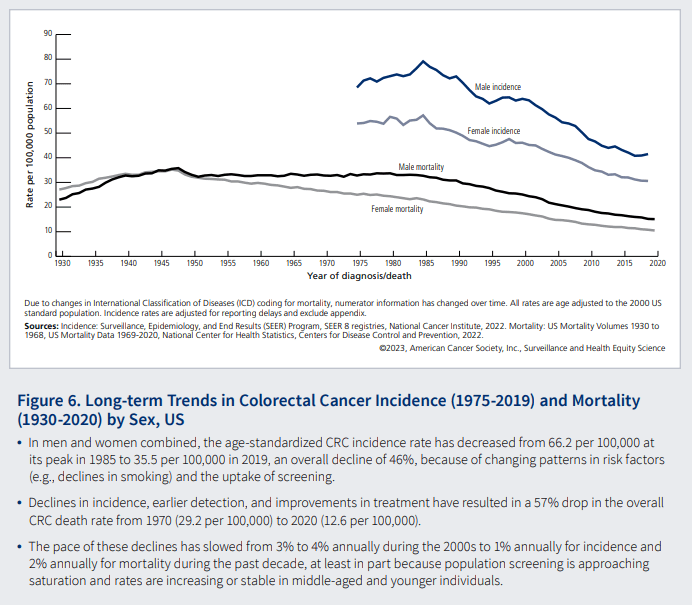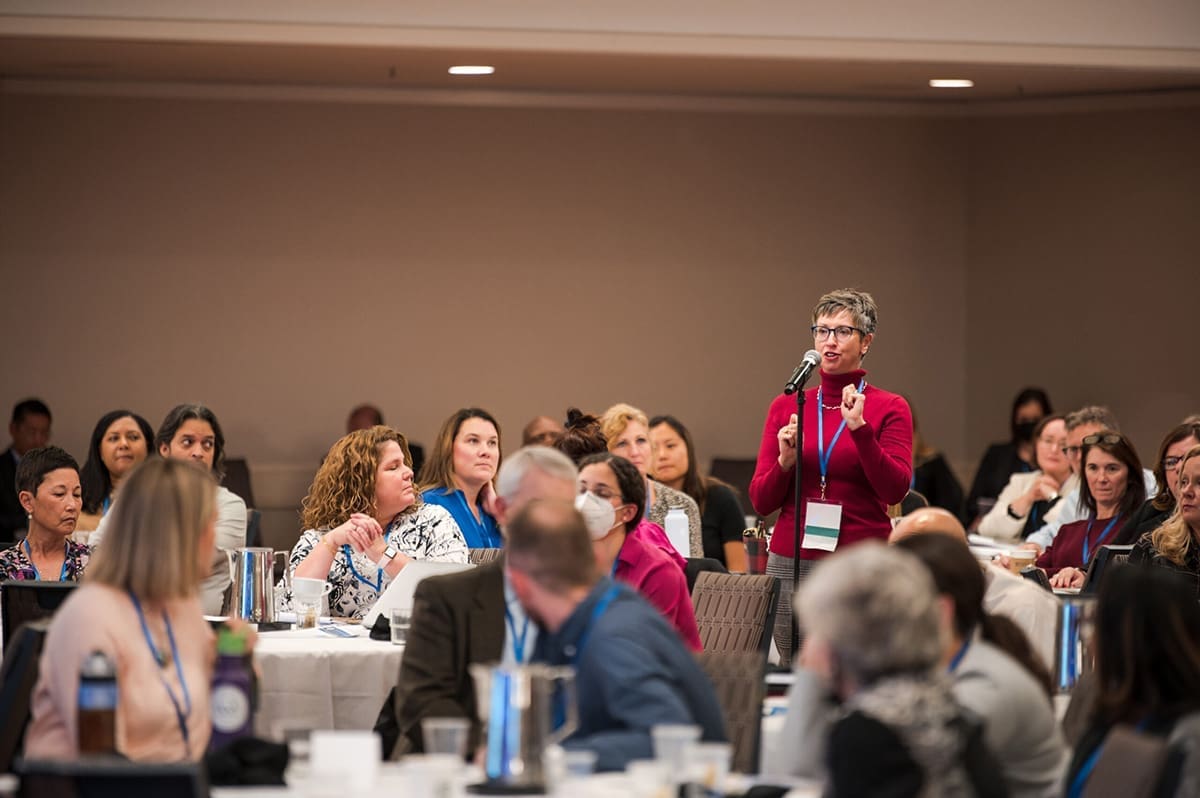Colorectal cancer is the second leading cause of cancer death in the U.S. when men and women are combined,1 but it doesn’t have to be. Few preventive interventions are as reliably effective in reducing avoidable death as screening for colorectal cancer.
Colorectal Cancer Is A Major Public Health Problem
By the Numbers
152,810
Estimated adults diagnosed with colorectal cancer in 2024
53,010
Estimated deaths from colorectal cancer in 2024
>1 in 3
Adults ages 45+ not screened as recommended
1.54 million
Men & women alive in the US with a history of colorectal cancer
Colorectal Cancer Screening Rates
We’re tracking all major measures to assess our progress in reaching the goal of 80% of adults ages 50 or older screened for colorectal cancer. There are strengths and limitations of each.
State and Local Level Screening Rates
The following sources provide state, county, and city level screening rates:
- Colorectal Cancer Facts & Figures, 2024 (ACS) – state level screening, incidence, and mortality rates
- United States Cancer Statistics: Data Visualizations (CDC)
- CRC Screening – state and county-level estimates
- CRC Incidence and Mortality – state and county-level estimates
- CRC Incidence and Mortality Trends – state-level trends
- Cancer Statistics Center (ACS) – state-level screening, incidence, and mortality rates
- State Cancer Profiles (NCI) – county-level screening, incidence, and mortality rates
- PLACES: Local Data for Better Health – screening rate estimates for counties, places (incorporated and census designated places), census tracts, and ZIP Code Tabulation Areas
Colorectal Cancer Incidence & Mortality
Colorectal cancer incidence and mortality rates have dropped by over 30% in the U.S. among adults 50 and older in the last fifteen years, with a substantial fraction of these declines due to screening. Declines in CRC incidence and mortality have slowed from 3%-4% per year during the 2000s to 1% per year and 2% per year, respectively, during the past decade.

Colorectal Cancer Disparities & Trends
Significant disparities in colorectal cancer screening, incidence, and mortality persist by socioeconomic status, race/ethnicity, geography, and other factors. In addition, recent research indicates colorectal cancer incidence rates are rising in young and middle-aged adults. Visit the following NCCRT News stories and other sources to learn more.
- Colorectal Cancer Facts & Figures, 2023-2025 (ACS)
- 2019 Colorectal Cancer Screening Messaging Guidebook (guidance on reaching priority populations) and corresponding Companion Guides for Black & African Americans, Hispanics/Latinos, and Asian Americans
- Study identifies geographic hot spots for colorectal cancer mortality
Visit the Resource Center to explore resources that address these and other disparities.
Sources
- Cancer Facts & Figures. American Cancer Society. 2024. https://www.cancer.org/research/cancer-facts-statistics/all-cancer-facts-figures/2024-cancer-facts-figures.html
- Colorectal Cancer Facts & Figures. American Cancer Society. 2023-2025. https://www.cancer.org/research/cancer-facts-statistics/colorectal-cancer-facts-figures.html
- Meester RG, Doubeni CA, Zauber AG, et al. Public Health Impact of Achieving 80% Colorectal Cancer Screening Rates in the United States by 2018. Cancer. 2015 Jul 1;121(13):2281-5.
- Centers for Disease Control and Prevention (CDC). Behavioral Risk Factor Surveillance System Survey Data. Atlanta, Georgia: U.S. Department of Health and Human Services, Centers for Disease Control and Prevention, [2012, 2014, 2016, 2018, 2020].
- Siegel, R.L. (2023). Colorectal Cancer Statistics 2023 [PowerPoint slides]. American Cancer Society. https://nccrt.org/resource/march-2023-webcast/ and National Center for Health Statistics. National Health Interview Surveys, 2019-2021. Public-use data files and documentation. https://www.cdc.gov/nchs/nhis/index.htm
- 2022 Health Center Data. Health Resources & Services Administration. 2022. https://bphc.hrsa.gov/uds/datacenter.aspx
- Colorectal Cancer Screening. National Committee for Quality Assurance. http://www.ncqa.org/report-cards/health-plans/state-of-health-care-quality/2017-table-of-contents/colorectal-cancerents/colorectal-cancer
- Centers for Disease Control and Prevention (CDC). Quick Facts: Colorectal Cancer Screening in U.S. https://www.cdc.gov/cancer/colorectal/pdf/QuickFacts-BRFSS-2016-CRC-Screening-508.pdf
- Centers for Disease Control and Prevention (CDC). Use of Colorectal Cancer Screening Tests. https://www.cdc.gov/cancer/colorectal/statistics/use-screening-tests-BRFSS.htm
- Centers for Disease Control and Prevention (CDC). National Health Interview Survey, 2015. Public use data file.
https://www.cdc.gov/nchs/nhis/nhis_2015_data_release.htm

